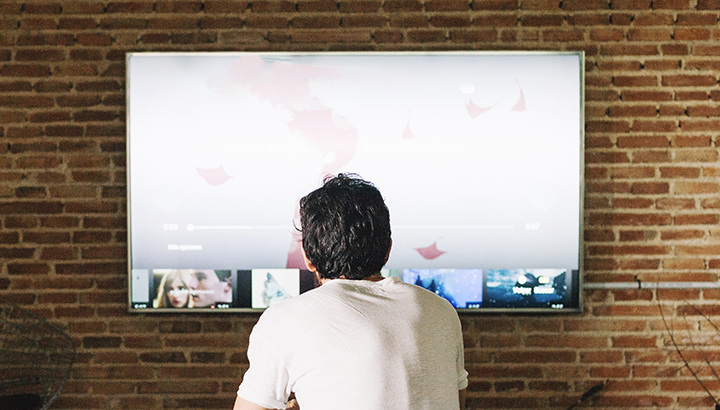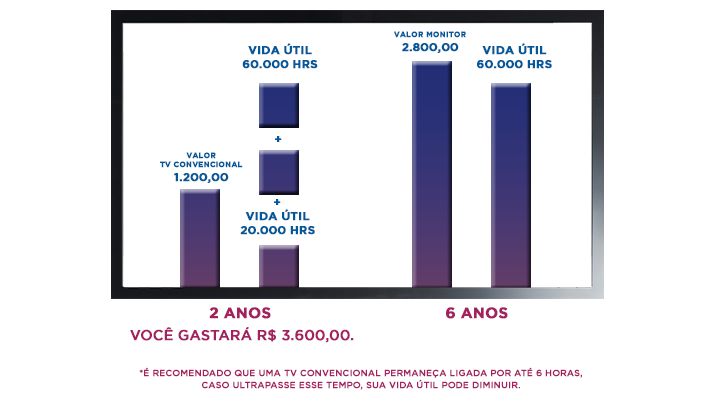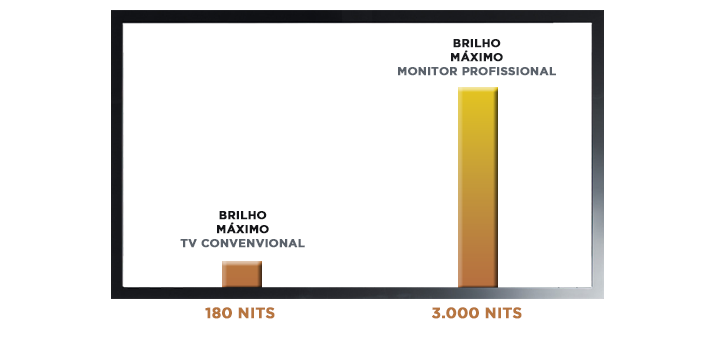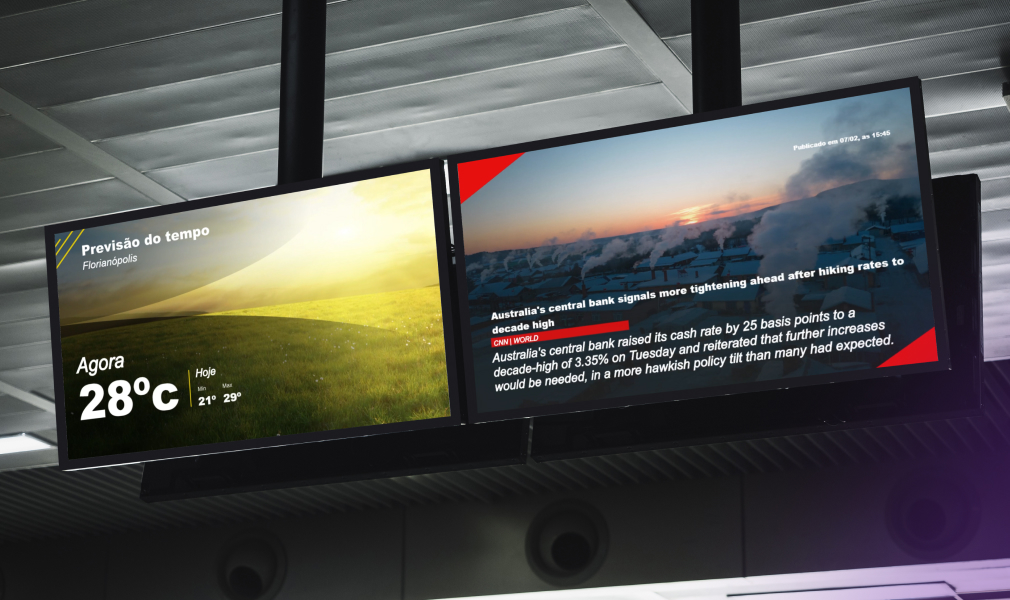Ask your questions and understand the difference between these two types of equipment.
After making the decision to implement a Corporate TV in the company, or a digital showcase In the establishment, contractors always come up with many questions, each segment with its own particularities, but there is one question in common: Why shouldn't I install a conventional TV?
Conventional TVs are household equipment and meet the needs of individuals. Professional monitors have more features and are manufactured for use in stores and companies. The warranty for these products is also very different, conventional TVs last 1 year and professional monitors can last up to 3 years.
The investment in a professional monitor is higher than in a conventional TV, but saving on implementation may not be the best option, as there are technical differences such as operational efficiency, ease of implementation, features and durability (while the professional monitor has in around 60,000 (sixty thousand) hours of durability, and with models that can be used up to 24 hours a day, 7 days a week), conventional TV meets less than half of these specifications. Understand better:
*The prices presented here are merely for example calculations. To obtain an official commercial proposal, fAle with us.
We invite those who understand the subject to talk about the importance of investing in equipment developed exclusively for this:
“The difference between professional monitors and TV begins with the requirements for product development, goes through the most rigorous testing process and ends with after-sales dedicated to the corporate market. There are multiple benefits for companies that adopt a professional Digital Signage solution, but it is worth highlighting security and lower total cost of ownership (TCO), as professional monitors have greater durability and useful life, supporting operation up to 24/7. 7 and reducing indirect costs such as repair and unavailability of the solution (critical in environments such as retail and transportation), in addition to remote management/monitoring that ensures greater efficiency in operation and faster and more practical content distribution to serve increasingly dynamic businesses.” , told the Leonardo Di Clemente, Product Marketing Manager at LG.
“Digital Signage technologies offer a more visually realistic and immersive alternative to standard signage or conventional televisions. It is a solution that adds value to business, facilitating communication between establishment owners and customers. Samsung professional monitors, for example, feature convenient content management and an embedded player, which allows you to create interactive and visually attractive experiences for your audience.” complemented the Kauê Melo, Division Director at Samsung Brazil.
Check out some more comparisons below:
-
SHINE
The retail environment and corporate environment demand monitors that have high brightness to attract the public's attention.
Conventional TV: Brightness of maximum 180 nits.
Professional Monitor: Brightness of 300 to 3,000 nits.
-
VERTICAL AND HORIZONTAL OPERATION
Professional application requires flexibility in installing monitors due to the most varied installation environments, whether due to space limitations or aesthetics and harmonizing the environment.
- Conventional TV: Designed for horizontal use, due to the ventilation needs of the product.
- Professional Monitor: Designed for use both vertical how much horizontal.
-
VIDEOWALL
In this topic it is important to note two issues: Videowall function and Edge thickness.
- Conventional TV: In addition to having very thick edges, it does not provide a video wall function (necessary to combine the image of two or more devices to form a screen), making it necessary to use a PC with a more robust and expensive video card.
- Professional Monitor: It allows you to configure it as if we were creating an “excel spreadsheet”, with rows and columns, where each monitor will be like a cell in the spreadsheet, in different formats: 2×2…3×3…3×2…etc. Furthermore, professional video wall monitors have very thin, millimetric edges.
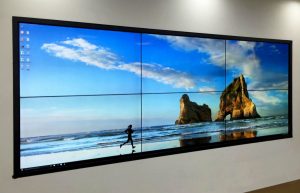
-
Embedded player
Last but not least (or, in some cases, even more important than the previous points):
- Conventional TV: A Conventional TV (even a SmartTV) always needs an external Player (a mini-computer) to be able to operate digital signage. This means that you must have at least one additional outlet point (socket for the TV and another for the Player), in addition to an HDMI cable connection, in other words, it increases the level of variables that could present problems in the future. Another very important issue is system monitoring where, in scenarios with External Players, the digital signage systems always monitor the Player and not the TV, that is, sometimes the Player is on but the TV is not and your system may indicate that everything is working fine, when in reality, it is not.
- Professional Monitor: They have their own hardware, already incorporated/embedded in the monitor itself. In Brazil, the main manufacturers (LG and Samsung) already have the B2 Mídia software approved for this type of operation. Less equipment, fewer variables, more robust structure, better results throughout the duration of your project.
These differences greatly affect the daily performance of your channel, so when this question arises, remember that the professional monitor is the investment that will bring better results for your business.
